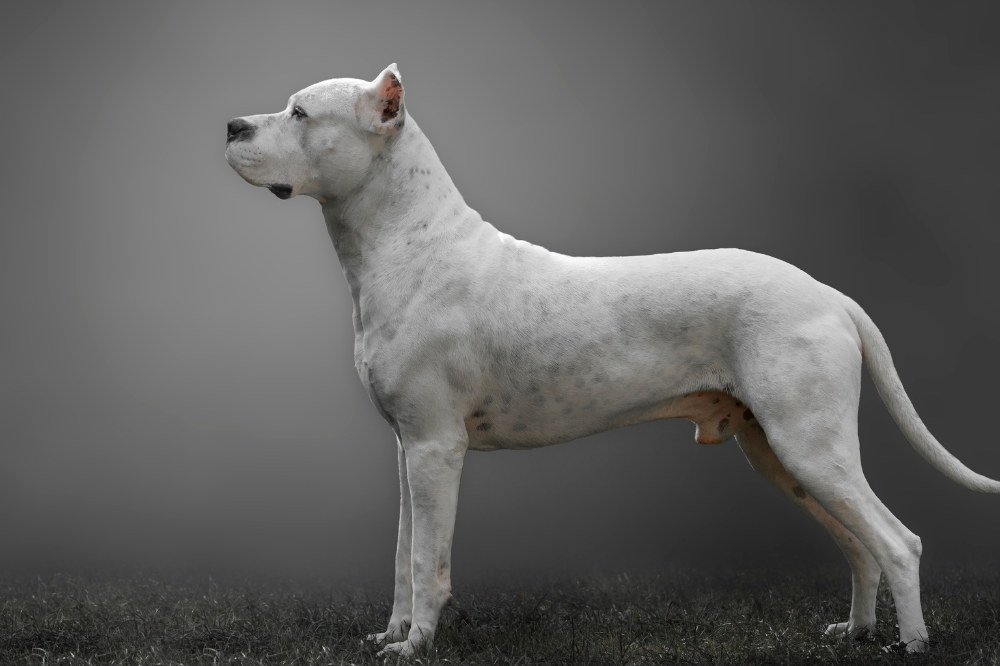RIO DE JANEIRO, BRAZIL – Arsim Dreshaj, a Croatian who has been living in Sweden for years, has a kennel of Argentine dogos in the city of Mariestad (300 kilometers from Stockholm).
His dogs sell for about 2500 euros and have Argentinean blood since he bought the first female from Horacio Rivero Nores, who has the oldest kennel in the country without interruptions since its origin; it is in Falda del Carmen in Córdoba province.
“I got to know the breed in 2004 in a book on hunting dogs,” Dreshaj told La Nacion newspaper. I started learning about those dogs; I read about how the breed was born and why they were suitable for hunting. I could not leave the subject”. He bought his first dogo in Spain, and in 2018 he traveled to Argentina.
Read also: Check out our coverage on Argentina.
“After having my dogs, I am sure that Argentina is my favorite place in the world, so much so that I would like to move there,” he says. He invested about 10,000 euros in traveling to the country and buying a pregnant female.

He explains that in Sweden, the pug is not so much used for hunting as for accompanying families because “they like nature, the outdoor life. It’s not a dog to sleep on the couch”. He sells some of his offspring to hunters, but they are generally destined for family homes.
He is preparing an upcoming crossbreeding of his Argentine female with a dogo of local blood that his friend has in Italy. “I will travel with the bitch, because hers is a great animal, and that’s very good,” he notes.
Rivero Nores’ father was a first cousin of Antonio Nores, the Cordovan doctor who in 1947 unveiled the first – and to this day the only – Argentine breed of dog. “They had been working for about 20 years; he did not have a laboratory, but his test tubes were the females and males he was crossing,” Rivero Nores told the newspaper.
In 1968 the Federación Cinológica Argentina recognized it as a breed, and in 1973 the FCI did the same at the international level. At present, two other species are seeking recognition, the Patagonian barbucho and the Argentine pampas.
Rivero Nores was one of the founders, in 1971, of the Dogo Club in Córdoba; from there, they started working to spread the breed. “It had a terrible press -the breeder points out when someone was bitten by a Dogo, the breed was criminalized.
Back then, dogos were used for hunting wild boar, puma, and peccary, which was allowed. Today hunting is no longer allowed because the game are on yellow alert”.
In Argentina, he estimates that there are about 1,000 people dedicated to breeding dogos. However, only a few dozen are registered in the Federation with genealogical registry and, therefore, pedigree.
In the ’80s, the breed began to reach Europe; still – says Rivero Nores – it is “the best dog in the world for hunting; it has a perfect sense of smell, physical structure, and courage. As the years went by, it started to enter homes.”
Breeding pedigree dogos is a business that has grown worldwide: there are recognized establishments in Spain, Italy, France, Germany, Serbia, Croatia, Hungary, and official clubs all over the planet, including China, Japan, Korea, South Africa, and the United States.
“They may not have Argentine blood and be very good, but the fact that they do is a plus. They sell serviced bitches, they can also service one that is brought to the country, and there are even those who sell frozen semen”. That is why many people come to buy females and males to start their careers,” adds Nores Rivero.
The price of the dogo varies according to sex (the female is worth more as a reproducer), health, age, kennel history, and background; it ranges from US$1,500 to US$6,000. Between four and six months of age is an excellent period to acquire it because there are already specific health data.
Nores Rivero points out that many international breeders bring dogos to shows in Argentina because “being a champion in the country of origin also adds up.”
To sustain a kennel has a “high” cost. Just for food, a dogo consumes about US$8,000 a year, plus physical care, trainers, veterinarians, and medicines.
“It is an Argentine ambassador in the world,” Rivero Nores explains. Nores’ breed crosses included the Perro de Pelea Cordobés (PPC) with English Bull Dog, Great Dane, Pyrenean Mastiff, Bull Terrier, Boxer, Pointer, Dogue de Bordeaux, and Irish Wolfhound.
Its creator defined it as “the best dog among all dogs of prey and the most prey dog among all dogs in the world”.

